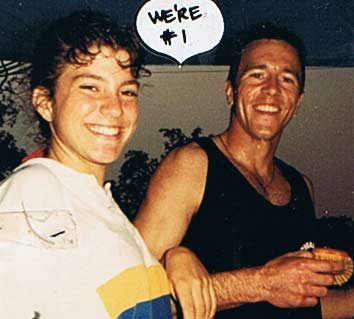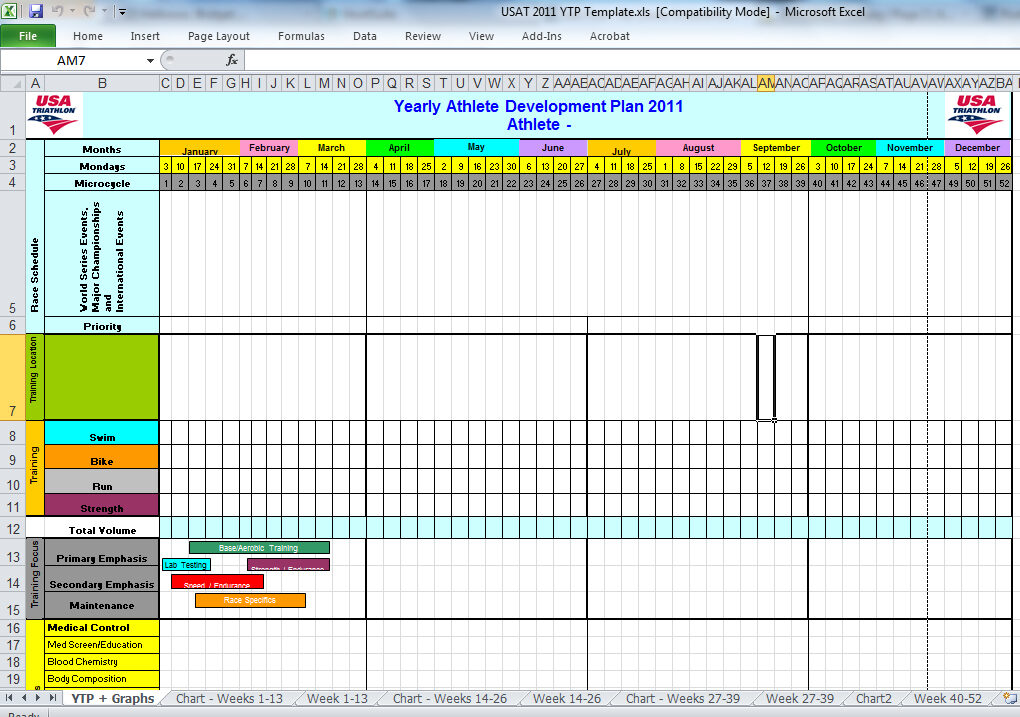
When I rowed crew in high school, my coach Joe Haney would preach to us during our workouts–on land and at sea–about the ways in which our training was designed to achieve peak performance for our big races at the end of the season. periodization
He knew his stuff.
During the four years I rowed with him, we were first or second every race. And, my senior year – no one beat us. We even competed at the international level. He knew peak performance.
Given the attitude so typical of teenagers, I didn’t pay much attention to the training principles that Joe talked about, such as endurance or anaerobic endurance, or strength and agility. But, flash forward to my life today as an athlete and a coach, and his training philosophy is the same as that which guides our training here at No Limits Endurance.
The philosophy? Periodization.
Basics: Setting Up The Annual Training Plan (ATP)
Periodized training prepares you for optimum performance at your key races by breaking the annual training plan (ATP) into distinct cycles. Each cycle has a specific and measurable set of training goals and targets, and works to find the optimum balance between training load and recovery to ensure that you reach those targets.
Constant increases in training load, in terms of volume and/or intensity, will not result in optimum performance. Rather, the body adapts to training stimuli during recovery periods – sleep, rest days, active recovery workouts and so on. So, it is absolutely VITAL to strike a balance between overload and recovery.
This balance is not one-size-fit-all. It needs to be adjusted to the unique abilities and responses of each individual body. Periodization is a process that helps us find this individualized balance, and it incorporates three types of training cycles: Macro, Meso and Micro. The cycles move from the most broad to the most specific.
Macrocycles
The Annual Training Plan (ATP) is a macrocycle. The macrocycle is your year (or other set period of time)-at-a-glance, and identifies all of your key races, recovery periods, and so on. It includes an overview of how much time you have yearly, monthly and weekly to commit to training. It describes limiters that need to be addressed throughout the year, as well as the key goals and targets you have for the year.
With this outline is place, it is possible to determine the general and specific types of training that should be scheduled throughout the year. For example, if your key race is seven months away, we would not (should not!) be scheduling race specific workouts today.
Here’s an example of a template for determining an athlete’s ATP (provided by USA Triathlon).
Mesocycles
The macrocycle is further broken down into mesocycles, which allow us to prescribe the general goals for training during that period. A single mesocycle can last from 2-16 weeks, throughout which the training focuses on a specific, interrelated set of goals, such as endurance, agility, muscular endurance, and/or speed skills.
 There are several different types of mesocycles, and they may be called different names depending upon the book you read, or the coach you train under. Examples of these cycles include:
There are several different types of mesocycles, and they may be called different names depending upon the book you read, or the coach you train under. Examples of these cycles include:
- Base – a general (meaning non-race specific) preparatory phase
- Build – a more race-specific preparatory phase
- Pre-competition – a race-specific phase
- Taper/Peak – an unloading phase that permits peak performance
- Transition – a post-race recovery phase
Regardless of what they are called, each of these phases targets a distinct set of goals to be accomplished before moving on to the next phase. For example, in order to handle the training stress of the more specific preparatory phase, an athlete must have an adequate base. The specifics of each of these phases depends on what the athlete’s key races are, their athletic history, and their goals for the year. In other words, a “base” phase doesn’t always mean high volume, low intensity.
Athletes (or their coaches) can measure the progress at the end of each mesocycle, or at a key point within a mesocycle, and adjust the specific training sessions to ensure that the athlete is on track for optimal performance.
Microcycles
Specific training sessions, such as a 40 minute tempo run, are organized into what we call microcycles, which are 3-14 day blocks of workouts. Given the nature of our lifestyle, the most typical microcycle is a week long.
During these cycles, we design specific workouts that will help achieve the broader goals dictated by the mesocycle. For example, if one of the goals of the mesocycle is muscular endurance, we might schedule a tempo run (or ride), which is designed to enhance the amount of power an athlete can sustain for an extended period of time.
Because each athlete’s schedule and goals are different, the periodization plan is unique to that person. While generic plans can help you finish, they are not designed to help you – as an individual person – achieve an optimal performance.
Click here for information about our services. Or, contact us if you’d like to speak with us about how we can help optimize your training for peak performance.

